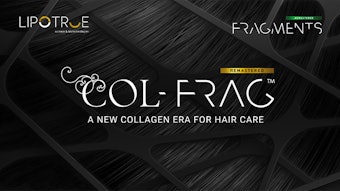The herb Glycyrrihiza glabra (licorice) is recorded on Assyrian tablets and Egyptian papyri denoting its use in treating gastritis and ailments of the upper respiratory tract. The word is actually derived from the Ancient Greek glykeia rhiza, or sweet root, although some find the taste of licorice bitter. It also has a long history of medicinal use in Europe and Asia. In the early 90s, Japanese scientists isolated certain compounds in licorice that were useful for skin care, primarily for lightening and smoothing. Since then, according to Mintel GNPD Cosmetic Research, the use of licorice, Glycyrrihiza glabra and glycyrrhetinic acid have increased steadily. In fact, licorice use in skin care has almost tripled since 2003. The most recent product launches featuring licorice appeared in the United States, followed by launches in France and Japan. Below are some innovative face, body and eye care products containing licorice in various forms.
In Japan, Shu Uemura introduced Cleansing Beauty Oil Premium A/I, described by the company as a "quasi-drug positioned, medicated cleansing oil with licorice extract to prevent roughness." It also contains chamomile, lavender, and amino acids to prevent pufiness associated with dry skin. It claims to "wrap acne-prone, adult skin with a rich texture, cleansing it while leaving the skin moist."
In the UK, glycyrrhetinic acid is found in nude skincare's Cleansing Milk. The Cleansing Milk also contains iris and juazeiro extracts, that together with licorice, claim to "leave skin beautifully soft and supple.'" The company does not conduct or commission any animal testing and sponsors the UK charity Frame, which researches and promotes alternatives to laboratory animals in research, testing and education.
Licorice has been shown to inhibit the tyrosinase activity of melanocytes without any cytotoxicity; therefore, is frequently seen in whitening ranges. In France, an innovative product with licorice is Christian Breton White Lab+ White Science Expert Correcteur Eclaircissant, or Target Spot Whitening Corrector. The roll-on pen corrector is designed to target "just like a laser, each and every stage of the melanin formation process to help reduce stubborn sun, age and dark spots." The clear serum is applied directly to dark spots, under a moisturizer. In addition the product is formulated with white mulberry, bearberry (anti-oxidant) and other plant extracts used in traditional Chinese medicine.
The combination of licorice and bearberry is also featured in Medik8 Red Alert Professional Strength Anti-Redness Formula. This product is part of a UK cosmeceutical brand from Pangaea Laboratories, sold in professional salons and spas. The 24 products are divided into three ranges: Injection Free, Solutions and Daily. In this case, licorice and bearberry are used along with a complex of 8% vitamin K. The company claims the product can be applied to the face or body to help to fade and clear thread veins, skin redness, rosacea and bruises. The serum works by promoting anti-oxidation, strengthening of vein-walls and enhancing coagulation.
Licorice also appears in two body scrubs launched this year, albeit not as a primary ingredient. Vinothérapie scrub by Caudalíe Sauvignon is a paraben-free, soft exfoliating product that hydrates and nourishes the skin. It contains plant and grape extracts that reach deep into the skin. In Clarins Smoothing Body Scrub For A New Skin, glycyrrhetinic acid is paired with Mimosa tenuiflora to repair, soothe and protect skin against irritation.
It is the eye care category where licorice is seeing particular activity this year. According to Mintel GNPD Cosmetic Research, five premium eye care products with the licorice derivative glycyrrhetinic acid have launched since May, compared to 10 since 2001. The new eye products are Kanebo's Sensai Silk Eye Contour Balm, Zelens Intensive Triple Action Eye Cream, Farmacia's Naturals Spa Therapy Anti-Age Eye Contour Cream, Diego Dalla Palma Concura Cancella Contour des Yeux Effet Lifting and Lancôme Secret de Vie Yeux Soin Activateur Cellulaire Complete. All use licorice to treat inflammation in the eye area.
With the current trend for radiance and the steady segmentation of the skin care category, Mintel expects that licorice will continue to sweeten cosmetic formulations.
—Nica Lewis, Mintel

![Lead Image2 [nas] 800x450px](https://img.cosmeticsandtoiletries.com/files/base/allured/all/image/2024/10/Lead_image2__NAS__800x450px.6704042d635b8.png?auto=format%2Ccompress&fit=crop&h=191&q=70&w=340)








